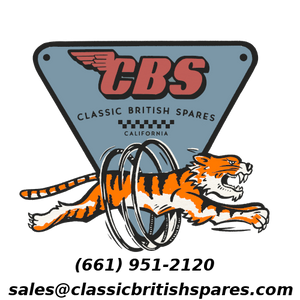
Service Bulletin: Clutch Release Rod 57-1736
Click on the image above to enlarge - you may download, print, share, or save the file.
This Triumph service bulletin is dated May 8th, 1970 - and was released to all Triumph dealers at that time. I will go into further detail below of what to look for in a worn clutch push rod and how to replace it.
The information that I will be discussing today can also be applied to BSA singles and twins along with different marks of Triumph motorcycles. If your vintage British motorcycle features a clutch push rod then I recommend that you keep reading as this post is relevant to you.
What is a clutch push rod?
In essence the clutch pushrod is the leading factor of when your clutch will engage and disengage. Without the clutch pushrod you will not be able to properly operate your clutch and transmission
How does a clutch push rod wear?
When you pull in the clutch lever you have to keep in mind that the clutch push rod is under a tremendous amount of stress. When the clutch is disengaged (with the lever pulled in) it is putting pressure on both ends of the rod. This is typically where the damage and wear takes place.
I have also found that some new clutch pushrods that other sellers are offering are not properly heat treated on both ends of the rod. It is vital that when you replace your clutch pushrod or you make your own that you heat treat both ends to ensure maximum longevity.
Symptoms of a worn clutch push rod
•Constant adjustment
•Mushroomed ends
•Length not the correct size
Specifications chart
| Brand | Part Number | O.D. (Outer Diameter) | Length | Finish |
| Triumph 1963-1982 | 57-1736 (T1736) | .219" | 11 13/16" | Heat-treated ends |
| BSA 1962-1972 | 68-3229 | .219" | 11 1/8" | Heat-treated ends |
How to change the clutch push rod
Shown is the clutch adjuster screw and nut on a Triumph 650
Those that do not have an inspection cap on the primary cover you will have to remove the entire primary cover. Once the primary cover is removed you will now be able to remove the clutch push rod.



Classic British Spares
@Andrew – that is correct on BSA twins… Cheers
Andrew Meleo
There is a ball bearing between the clutch actuator rod and the clutch actuating mechanism on the timing side.(BSA twins, not sure about triumph) Make sure it is in place or you will have clutch adjusting problems.